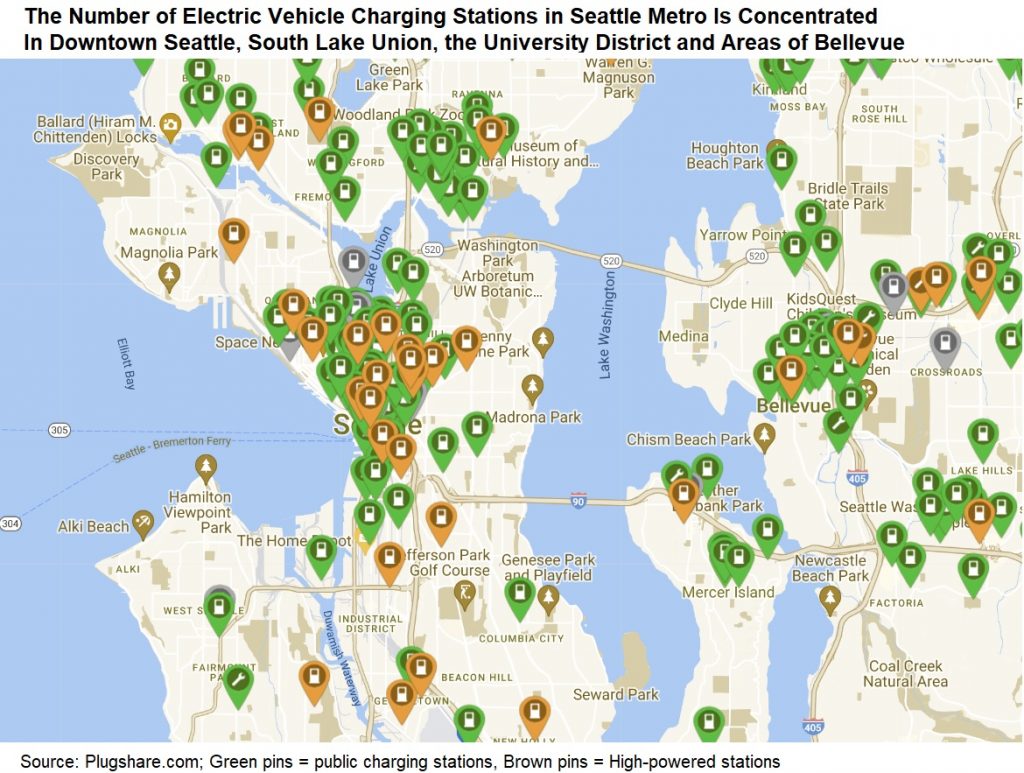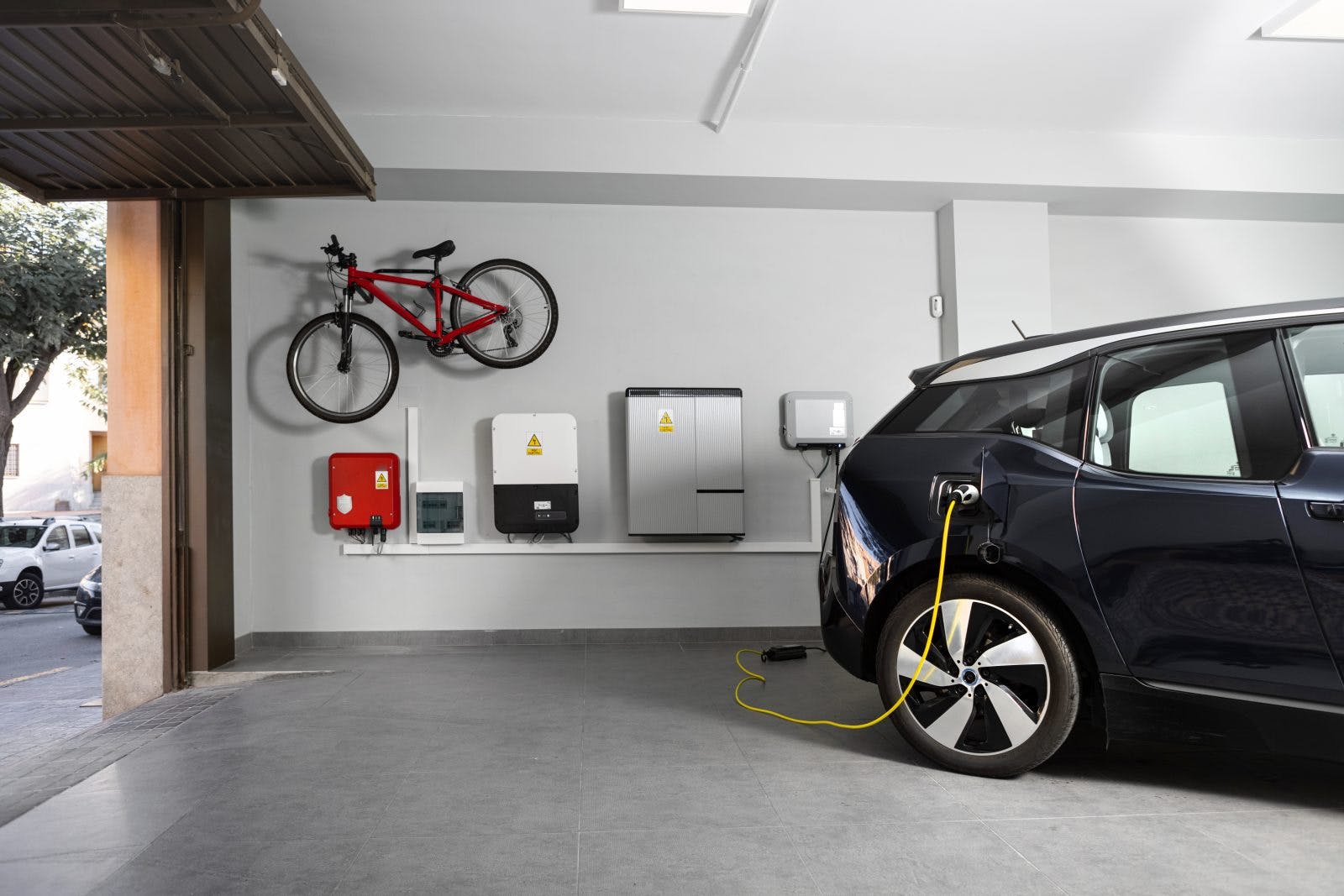The price of gas is on everyone’s mind – unless you don’t own a vehicle. Only a year ago, Seattle-area drivers were paying about $3.90 a gallon for unleaded regular gasoline. Today, well, I don’t even want to talk about it!
It is moments like these when consumers make the difficult (dare we say “bold”?) choice to ditch their gas-powered vehicles for something with an electrical outlet. The evidence is clear: Americans (and many others around the world) are switching to electric vehicles, or EVs.
In 2010, there were about 17,000 plug-in EVs on the road worldwide. That is now the approximate number sold every day in the world with more than 16M of them on the road. About 1.5M Americans now own an all-electric vehicle, including about 52,000 in Washington, or 2% of all vehicles on our state’s roads.
As the cost of owning a gas-powered engine climbs, the charge toward buying a vehicle that charges is picking up speed. However, one aspect of the EV movement is still trying to get into gear – the installation of charging stations.
While the number of plug-in EVs jumped about 88% from 2020 to 2021, the rate of new charging stations has climbed by only 31% in that period. There are about 130,000 stations in the U.S. today, including some 4400 in Washington, the sixth-most among the 50 states.

EVs are expected to make up a majority of new car sales worldwide by 2040, according to one report. While it is encouraging that more consumers are choosing to buy EVs and more manufacturers are producing electric models, the number of chargers needs to improve.
The initiative received a significant boost in late 2021 with the adoption of the infrastructure bill that allocated $7.5B toward an additional half-million public chargers across the U.S. Additionally, the Washington Legislature budgeted $103M in public charging infrastructure in 2022 – all while the state passed a law last year that bans the sale of new gas-powered vehicles by 2030.
In addition, King County Council just approved a measure that will require 10% of parking spaces in new and “substantially remodeled” apartment buildings must have EV charging capability and 25% of all spaces must have the infrastructure in place for charging. The law affects only unincorporated portions of the county – anywhere outside cities.
Seattle leaders passed rules in 2019 that requires new, single-familiy homes include EV-ready parking spaces and 20% of spots be EV-ready in multifamily developments. And Seattle City Light recently began accepting requests from residents to install charging systems at curbside beginning in 2023.
With the gas-vehicle deadline less than 8 years away, owners – whether they plan to stay in their homes for years or sell soon – will benefit from having their own charging system. Vehicle owners can use a standard outlet with the provided plug (Level 1 charging), which can add about 38 miles of “juice” in an overnight charge, or have an electrician install a 240-volt (Level 2), wall-mounted charger to add 25 miles of power for every 30-minute charge (times may vary).
The initial cost to install a Level 2 charger can be about $2500-$3000. Some manufacturers and electric utilities offer incentives to make the purchase enticing for homeowners.
Installation costs depend on many factors. They include the age of the home, electrical panel capacity and distance between panel and car.
Consumers are motivated to purchase an EV by a desire to lower their carbon footprint. All fuel-powered forms of transportation – yes, planes, trains and automobiles – contribute about 27% of the country’s greenhouse gas emissions.
They also can take advantage of savings when purchasing an EV from state retail sales credits and through federal tax credits – unless buying a Tesla or GM model or if leasing the vehicle. Longer term, Car and Driver estimates an EV can save an owner about $8,000 over the life of the vehicle versus a traditional combustion engine car or SUV. (Since this article was published, the U.S. government has changed the rules on which vehicles receive credits and The Seattle Times published a good primer for consumers.)
There are many types and brands of EV chargers on the market. Here are a few factors to consider and tips, courtesy of energy.gov:
- Hardwire/Plug-in: While many charging stations need to be hardwired and cannot be moved, some modern models plug into the wall for additional portability. However, these models may still need a 240-volt outlet for operation.
- Length of cable: If the chosen model is not portable, it is important to make sure the car charger is mounted in a place that enables it to reach the electric vehicle port.
- Size: Because garages are often tight on space, look for an EV charger that is narrow and offers a snug fit to minimize the intrusion of space from the system.
- Weatherproof: If the home charging station is being used outside, search for a model that is rated for use in extreme weather conditions.
- Storage: It is important not to leave the cable hanging loosely while it’s not in use. Try to find a home charger with a holster that holds everything in place.
- Features: There are charging stations that allow the scheduling of charging operations for times when electricity is cheaper. Some models can also be set up to resume charging automatically when the power comes back on should an outage occur. In some cases, charging station operations can be synced through a smartphone app.
- UL Listed: This important safety designation should never be overlooked. Make sure the charger contains the important Underwriters Laboratories seal of approval.
==========
If you liked this article, you may be interested in similar content from my Living the Dream blog. I developed a guide called Smart-home Technology: Planning and budgeting for the newest advances in safe living. It’s yours to download free at the website Smart-Homes.Technology.
More recently, I developed an additional three-part series on the smart-home theme:
- Smart Bedrooms – Products and Setup for a Better Way of Life
- Smart Switches – Intelligently Adding Convenience in the Home
- Smart Light Bulbs – Selecting Right Light Bulbs for the Home
NOTE: Details about actions taken by King County Council and the City of Seattle were added on Aug. 13, 2022, after the story was originally published.




